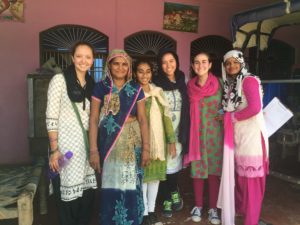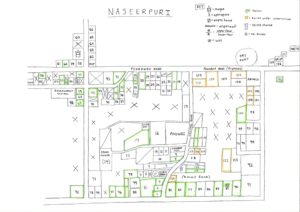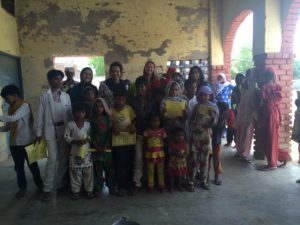Our goal is to inform the community about the many opportunities they have to receive funding from the different government schemes that are in place to support sanitation practices in rural India. In order to make this project sustainable we will be engaging the community to take action in building their own toilets as well as encouraging them to take advantage of the government scheme that will provide them economic compensation. The support provided by the Sehgal Foundation will serve as an incentive for the community by providing them with some of the materials necessary for the construction.
Over the course of six weeks, our team has worked implementing a project promoting the Swachh Bharat mission in the villages of Mundheta and Naseerpuri, as well as doing an impact assessment of Nourish’s project last year in Bhajeda, Baroji and Gehbar.
Sanitation map of the Mundheta Village: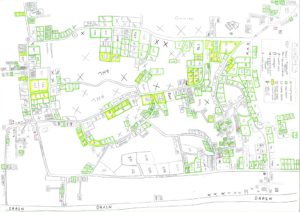
Total number of houses: 489
Total number of houses with toilets: 231
Total number of houses without toilets: 253
Sanitation map of the Naseerpuri Village:
Total number of houses: 132
Total number of houses with toilets: 36
Total number of houses without toilets: 88
-
From the micro-planning previously conducted, we found the following results:
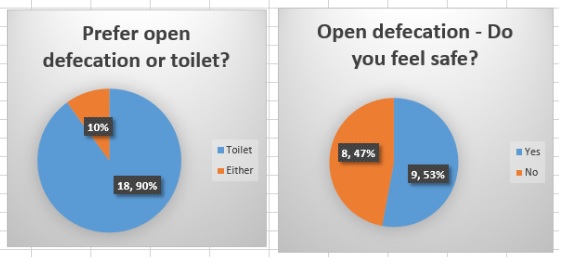
100% of those who do not have a toilet are interested in building one.
50% of those sampled haven’t heard of Swachh Bharat
Only 5% knew all of the benefits of having a toilet
30% knew all of the times to wash your hands
Only 55% knew that the convener of the VHSNC is the Anganwadi worker
90% if given the choice, prefer using the toilet
47% don’t feel safe having to go out to relieve themselves
-
From the Impact Assessment previously conducted, we found the following results:
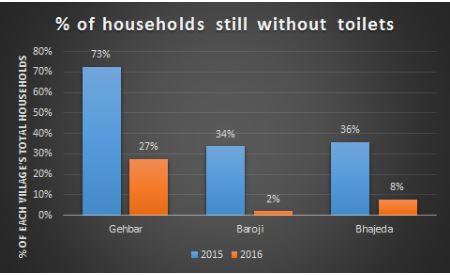
The project from last year implemented the Swachh Bharat Mission and promoted the use of toilets in the three Villages. They surveyed the amount of houses in each village that did not have working toilets and found that 73% in Gehbar, 34% in Baroji and 36% in Bhajeda. From the Impact Assessment conducted this year we found that since the intervention last year, the percent of individuals without toilets have decreased. We surveyed the amount of houses without a toilet after one year of completion of the project and found that 27% in Gehbar, 2% in Baroji,and 8% in Bhajeda.
* Comparison from the total number of households in each village, demonstrating the increase of toilet construction in the overall population.
While conducting our baseline questionnaires, we got a glimpse into the changes that the villagers want to see such as better roads, keeping each household accountable for keeping their area clean, and to stop dumping in front of the Anganwadi center. Community meetings will keep the village more organized and will in turn allow for these ideas to manifest into real change. Additionally, a higher frequency of community meetings will allow for an increased spread of sanitation and health information and the importance of it.
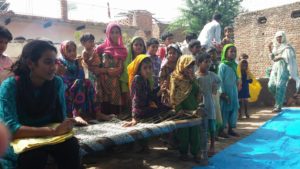
(Prerana Krishnan sitting next to many children that attended our sanitation workshop in the village of Naseerpuri)
It is vital that the community continues to implement the strategies and ideas that we have presented to them during this project, even after we have left. Specifically, the structure of the toilet itself lends itself to endurance. The two pit system allows for one pit to be used and then once full, the second pit can be used while the contents of the first are decomposed. However, in order for this concept to work as it is meant to, the owners of the toilet must take responsibility for its upkeep. Additionally, community meetings will help to instill the new sanitation practices and ensure that they become lifelong habits.
(Rachel Feldman, Jackie Bornstein, Stephanie Muench and Prerana Krishnan behind the children that attended our sanitation workshop in the village of Mundheta)
In the short term, we see that an immediate follow up (1-3 weeks) after our project ends is necessary with committee members from the VHSNC, Panchayat, and SMC to assist them in creating plans to continue the project and continue the education that we have only just begun. Additionally, it is important that those who do not have toilets now but claim that they are interested are followed up with and increasingly reminded of the benefits of constructing one. Our long term goals for this project is to have successfully promoted and brought awareness to the different government programs that are in place to support rural villages, as well as 100% toilet construction and sanitation practices.
-Stephanie Muench


